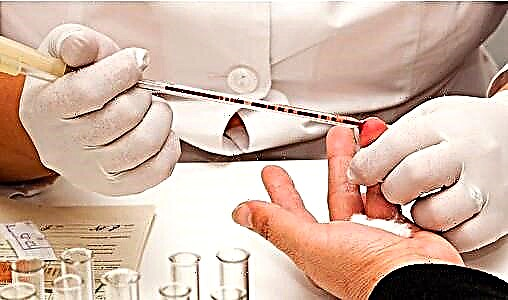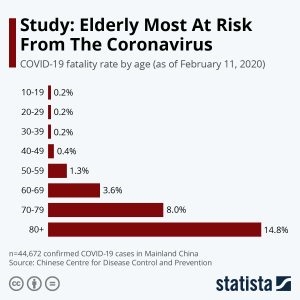
Among all the complications of childbirth, a special place belongs to amniotic fluid embolism. This is a condition that is associated with the penetration of amniotic fluid into a woman's bloodstream. A formidable and dangerous condition requires high skill and quick reactions from doctors.

What it is?
It all started in the 19th century. It was then, in 1893, that a German pathologist with a typical German surname Schmorl investigated the reasons for the sudden death of a woman in labor during childbirth. In her lungs, the doctor discovered a substance that has a place inside the fetal bladder, where a new life develops within ten months. Schmorl realized that amniotic fluid got into the lungs of the woman in labor, but they could only describe this phenomenon later. Colleagues of the German anatomist, American gynecologists Stein and Lumbauch, proposed the term - amniotic fluid embolism, and our contemporaries reduced it to three letters - EOV.
Amniotic fluid embolism is the ingress of water into the bloodstream, and from there into vital organs and systems. In this condition, a woman develops shock, an acute violation of the composition of the blood, and severe bleeding. Often, obstetric pathology becomes the cause of the death of a woman in labor. According to statistics, the probability of death for a patient with water embolism ranges from 50% to 90%. The average mortality rate for women is 84-87%. Among all cases of maternal death in childbirth, water embolism accounts for more than 17%.


Water is produced by the inner membrane of the fetal bladder - the amnion. This is the baby's first habitat that protects him from external noises and influences, nourishes him, and helps maintain the desired temperature and pressure inside the uterus. The kid swallows water and pees, and the composition of the waters is updated every 3 hours, so they remain clean and sterile.
The composition of the waters is very complex, it contains solutions of salts, hormones, vitamins, proteins and glucose, as well as particles of the baby's exfoliated epithelium and products of his vital activity.
When we talk about embolism, we mean blockage, but in the case of this pathology, this is not entirely true. The response of a woman's body is more like an allergic one, an anaphylactic shock. And it does not arise on the waters themselves, but on certain components of their chemical composition.


If the waters have entered the bloodstream and the doctors already see the response, their task is to eliminate anaphylactic shock as soon as possible and restore the functioning of the heart, blood vessels, respiratory organs, and also normalize the processes of blood circulation and hemostasis. The life of the woman in labor depends on how quickly this is done.
How does water get into the blood?
Water during pregnancy is inside the fetal bladder and usually leaves it already in the first stage of labor, when the contractions reach their peak. There may be premature discharge of water, but in any case, at any time there is a risk that part of the amniotic fluid, when the membranes rupture, can enter the bloodstream.
The doctors were able to establish that the risk of obstetric embolism increases significantly if the membranes break above the internal os... In most women, the rupture occurs in the area of the internal pharynx, and the water is able to immediately flow out, without accumulating and not penetrating into the intercellular space.
If the head of the fetus has already been inserted into the throat area, and the baby is ready to leave the uterus, labor is in full swing, rupture of the membranes can be pathological - in this case, the edges of the shell go higher, the water enters the intervillous space, and the embolism develops after the so-called anterior water leaves.
Water can enter the woman's bloodstream through damaged vessels of the placenta, for example, during her premature detachment, as well as through the vessels feeding the cervix, if she undergoes ruptures during childbirth. Another way that water can enter the bloodstream is through any damage to the uterus, such as rupture of the body of the uterus or performing a caesarean section.


Given that the main risk is high pressure inside the uterus during active labor and the openness of blood vessels in case of damage, the risk group for obstetric embolism includes:
- women in labor with multiple pregnancies;
- women giving birth to a large baby, the weight of which, according to preliminary medical estimates, is more than 4.5 kilograms;
- women with diagnosed polyhydramnios;
- women in labor during natural childbirth with breech presentation of the fetus;
- women with overstimulation of labor;
- women in labor, whose labor activity takes place too quickly, rapidly;
- women who give birth to a baby with hypoxia diagnosed before childbirth and the presence of meconium in the amniotic fluid.
Risks of sudden embolism in childbirth are increased in women with diabetes mellitus, preeclampsia, heart defects, lack of vascular elasticity, for example, against the background of thrombosis and the risk of thromboembolism. Often, pathology develops in women who have given birth a lot and often before, - the blood vessels of the uterus and their elasticity are reduced. There is also a risk of water entering the bloodstream during artificial termination of pregnancy, especially if the abortion is carried out by a fruit-destroying method.


What's happening?
How water can get into the blood, you now know. But the question may arise, what happens next, why is this hit so dangerous. In the waters there are epithelial scales, lanugo hair, which children get rid of in utero, primordial lubricant. Such a composition easily leads to blockage of small vessels. The blood flow in them is disturbed, since a mechanical obstacle to the blood flow appears.
In response to malfunctioning of small vessels, larger ones undergo reflex spasm. The small circle of blood circulation is disrupted, the pulmonary capillaries suffer, the woman begins to experience the strongest oxygen starvation, since the ventilation of the lungs is impaired.
The pressure in the pulmonary artery and the right ventricle of the heart rises. This leads to overload, and acute right ventricular failure begins. Cardiac output decreases, blood pressure drops. A collapse occurs.
At the same time, the immune bodies, which are in the waters and which effectively protect the baby from infections, begin to cause a strong allergic reaction in a woman. The strongest anaphylactic shock develops.
To top it off, bleeding opens, in the blood there is a very low content of fibrin, platelets, other coagulation factors are depleted. At first, while the first changes in blood flow were taking place, the factors were too active, and a large number of blood clots formed, especially a lot of them, usually in the lungs. At the final stage, the blood can no longer clot; concomitant embolism of the pulmonary and other arteries by previously formed blood clots is not excluded.
If water enters the bloodstream gradually, in small quantities, everything does not proceed so abruptly, and the lungs as a whole cope, like the heart, and therefore the shock stage is often avoided, but profuse coagulopathic bleeding cannot be avoided even in this case.


Embolism has a strong effect not only on the mother's body, but also on the baby. More than half of the children, according to doctors, die in the womb before being born. Death occurs from severe hypoxia.
Symptoms
Signs of amniotic fluid embolism usually appear during childbirth. In the first - grasping or second - tense periods. Much less often, signs of embolism become apparent after childbirth, usually during the first day.
The picture is quite typical, and every obstetrician knows it well. Childbirth proceeds normally, the contractions are strong, active, and suddenly the woman turns pale, turns blue, all the signs of an acute vascular catastrophe are evident. Blood pressure drops sharply, sometimes it is not determined at all. The pulse is weak. Many women in labor later admitted that they had experienced a severe attack of fear of death.
There may be severe chills, shortness of breath, fever. Breathing becomes either rare or frequent, it is shallow. The woman feels suffocating, becomes covered with a cold sweat, against the background of oxygen starvation of the brain, convulsions, hallucinations appear. There may be loss of consciousness, coma. The death of a woman can occur both within a few minutes and after 2-3 hours.


Several forms of pathology are distinguished depending on the dominant manifestations.
- Collaptoid - heart shock, drop in blood pressure, cyanosis, loss of consciousness.
- Convulsive - generalized convulsions.
- Hemorrhagic - with massive bleeding, not only uterine, but also bleeding from the nose and mouth.
- Edematous - pulmonary edema and acute respiratory failure.
- Swift - the most dangerous form in which all of the above occurs. The death of a woman in labor, and often of a baby, in this case is almost inevitable.

Subtleties of diagnosis
The outward signs of severe complications are usually quite typical. If EOB is suspected, doctors measure the pressure level, do a cardiogram, perform an urgent blood test for platelets, erythrocytes and hematocrit, and if necessary, a coagulogram is performed to establish blood coagulation factors.

If an edematous form is suspected, a chest x-ray is urgently performed.
Treatment
Treatment of embolism with amniotic fluid, whatever the reasons are its basis, implies provision of emergency assistance. Doctors, according to the protocols of the Ministry of Health and clinical guidelines, must do everything to stop shock, restore the work of the heart and lungs. At any stage, it is important to avoid hypoxia of the brain and irreversible changes in the composition of the blood, and therefore, first of all, the patient begins to supply humidified oxygen through a mask. In some cases, the woman in labor is immediately transferred to a connection to a ventilator.
While laboratory technicians are doing urgent tests, the woman is given hormonal support - prednisone or hydrocortisone. The drugs are administered in high doses. Replacement blood transfusion, the introduction of blood-substituting solutions can be used. These actions usually precede the main treatment. According to the test results, a woman can be recommended individual treatment regimens - the introduction of drugs to increase blood clotting and the like.


How the childbirth will proceed further depends on whether it was possible to achieve a stable state of the woman in labor. If this is done, labor can continue naturally. If the effect is small or not, carry out emergency caesarean section... If there is a massaging of uterine bleeding, which cannot be stopped, a complete removal of the uterus may be performed to save the woman's life.
At the end of the article, I would very much like to talk about the achievements of modern medicine, about positive forecasts, but the harsh facts do not give any right to this. In most cases, with water embolism, the prognosis is unfavorable for both the mother and the baby.

The specific consequences depend on the form in which the complication appeared, how quickly the symptoms grew, how quickly and correctly the help was provided.
Prevention
It is difficult to predict what develops suddenly. But it is possible to reduce the risks of embolism with water, experts say. To do this, during pregnancy, you need to pay attention to conditions such as the risk of preeclampsia, eclampsia, fetoplacental insufficiency. Women need to lead a healthy lifestyle, monitor weight and blood pressure, and nutrition. When hypertonicity of the uterine muscles appears, measures should be taken to eliminate the tone.
A woman should avoid stress, uncontrolled use of medications, register earlier and not give up her prescribed diagnostic examinations and tests.

The sooner the risks are recognized, the higher the likelihood that doctors will accurately choose a method of delivery in which neither the mother nor the fetus is harmed.
For the meaning of amniotic fluid, see the following video.



